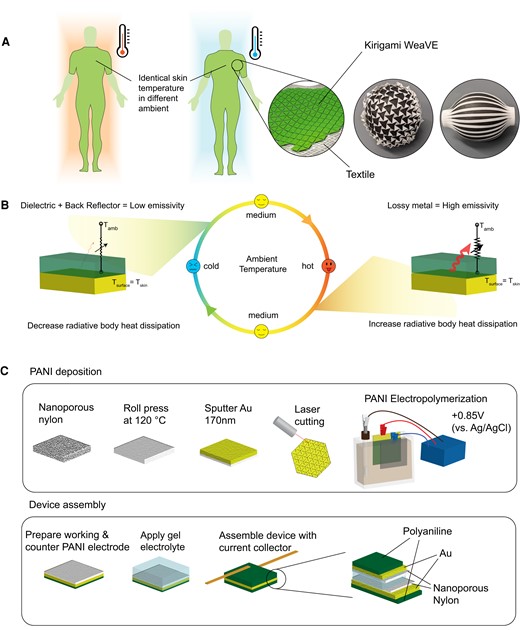Wearing weather-appropriate clothes is an absolute definition of comfort. Whether you are feeling too cold or too warm, your clothes will help in the right way. And to everyone’s astonishment, researchers for ages have been working towards improving the thermal performance of clothing to adapt to multiple temperatures and environmental changes. Finally, Po-Chun Hsu, Jie Yin, and their colleagues have developed an electrochromic wearable fabric with flexible insulating properties.
Why Electrochromic Wearable Fabric?
Our body acts differently under various circumstances. And it is proper clothing that can only help humanity continue with thermal homeostasis. Thus maintaining a complete balance between metabolic heat generation and body heat loss.
When it is too cold, the blood vessels contract to eliminate too much heat loss. The blood instead gets redistributed among the torso and the head so that the essential organs can continue functioning. However, this action also leads to increased blood pressure, which ultimately can
- Increase the risk of ischemic stroke and heart diseases
- Expand platelet aggregation
- And inflict other irreversible effects on the body with no proper treatments.

You have the houses and the regular clothes to help balance your body temperature. Still, the scientists sought a more personalized approach to all this, where they went on developing a kirigami-enabled WeaVE (wearable variable-emittance) system to help maintain thermal comfort when there is too much fluctuation in temperature.
Looking Deeper Into Electrochromic Wearable Fabric
In generating the electrochromic wearable fabric, researchers went on to layer an electrochemical cell in semi-solid form, deployed over nylon with a kirigami pattern. That gave the fabric enough flexibility to stretch and move as per the wearer’s body. Adjusting to the person’s regular movements.
To enhance the overall creativity, the researchers enabled the active material within the WeaVE system to be electrically adjusted between two different states.
- A glossy metallic one
- A transmissive dielectric state
On wearing the fabric, the person feels extra comfortable as the former adjusts its temperature based on the body heat radiated away and retained by the human.
What Makes The Kirigami-Enabled Wearable Variable-Emittance (WeaVE) System The Best Of Its Kind
As per other studies, technologies like Peltier coolers, resistive heaters, and water recirculation systems can be used for thermal management. However, they consume much more energy, making seamless long-term use difficult.
In contrast, the Wearable Variable-Emittance (WeaVE) system runs on a small amount of energy only when it is required to switch the state of the fabric. The team further estimates that the fabric can be switched on around 1000 times, using the energy stored in a typical smartphone battery.
The system can continue on a scheduled thermal comfort without energy input. And can carry on responding to ambient temperature alterations with the help of a small amount of electricity. The best thing is that the combination of control circuits and WeaVE can be a great scheme for autonomous tuning and personal thermoregulation systems.
So that is all about the future of thermal-controlled fabrics. It is a matter of time that will help people understand what more they can expect out of the same.



